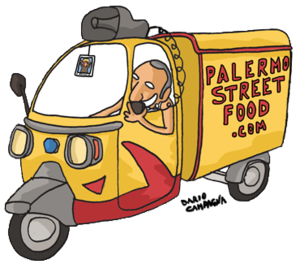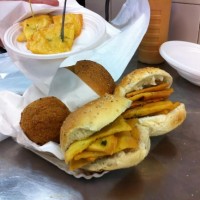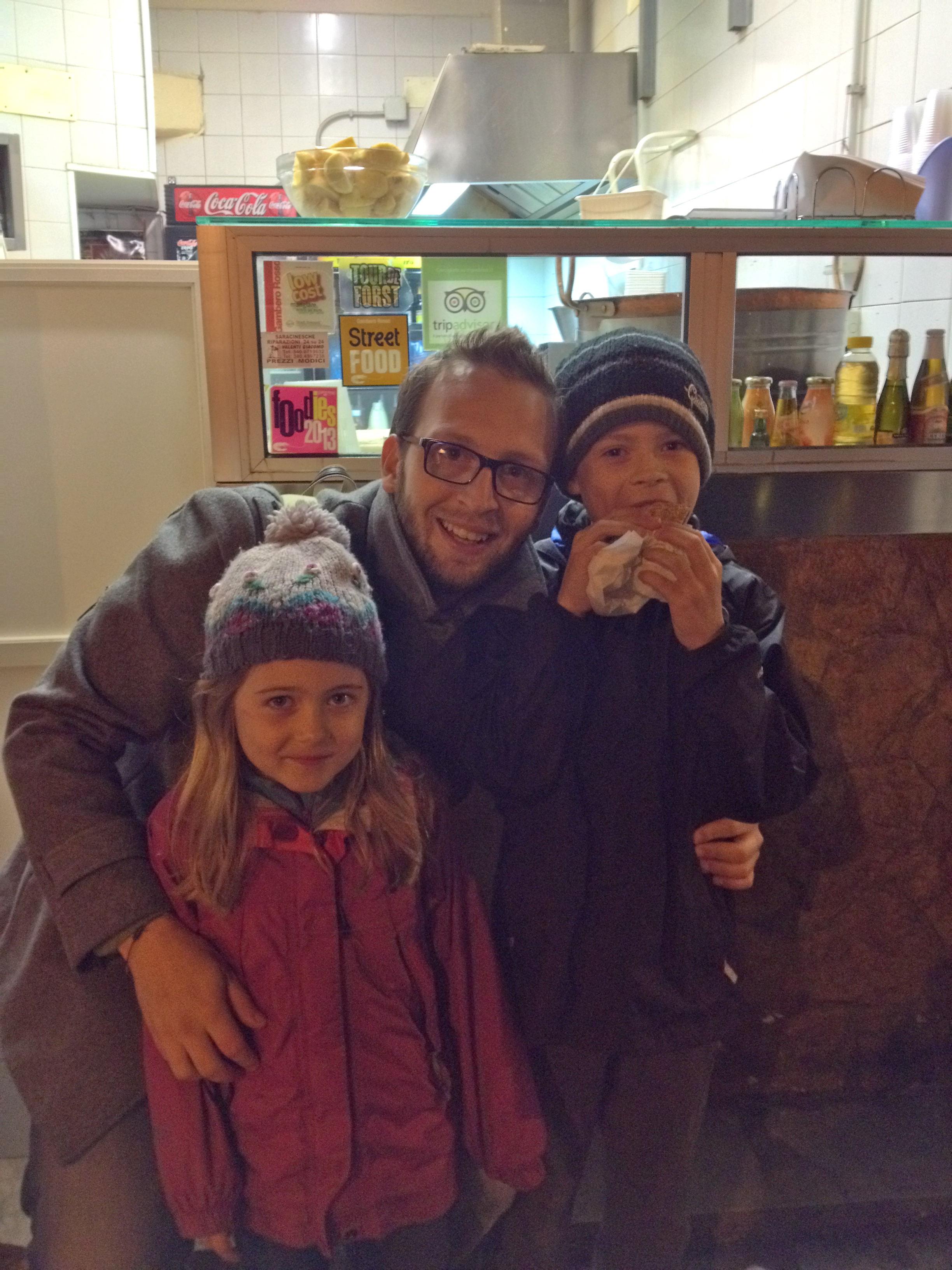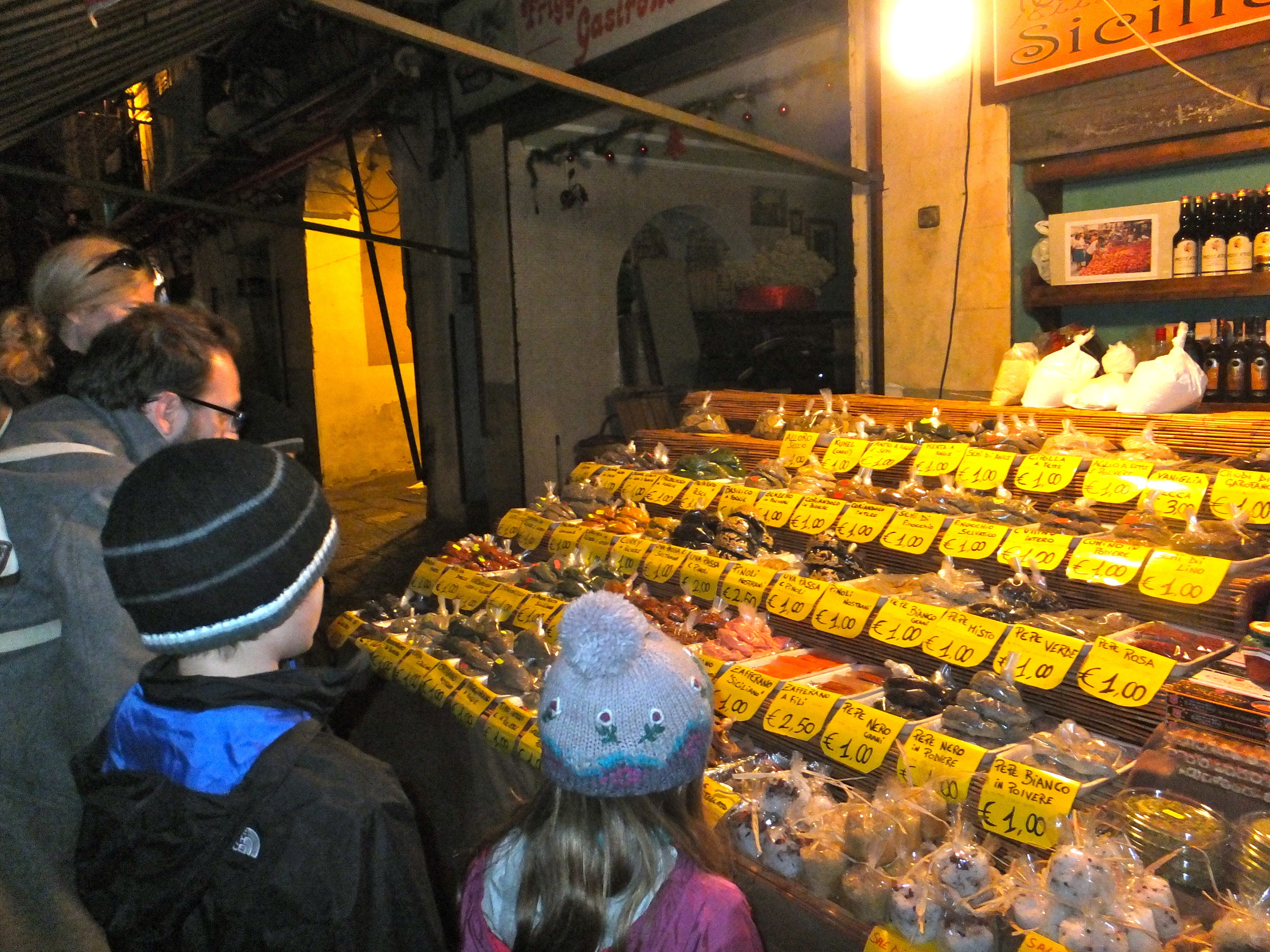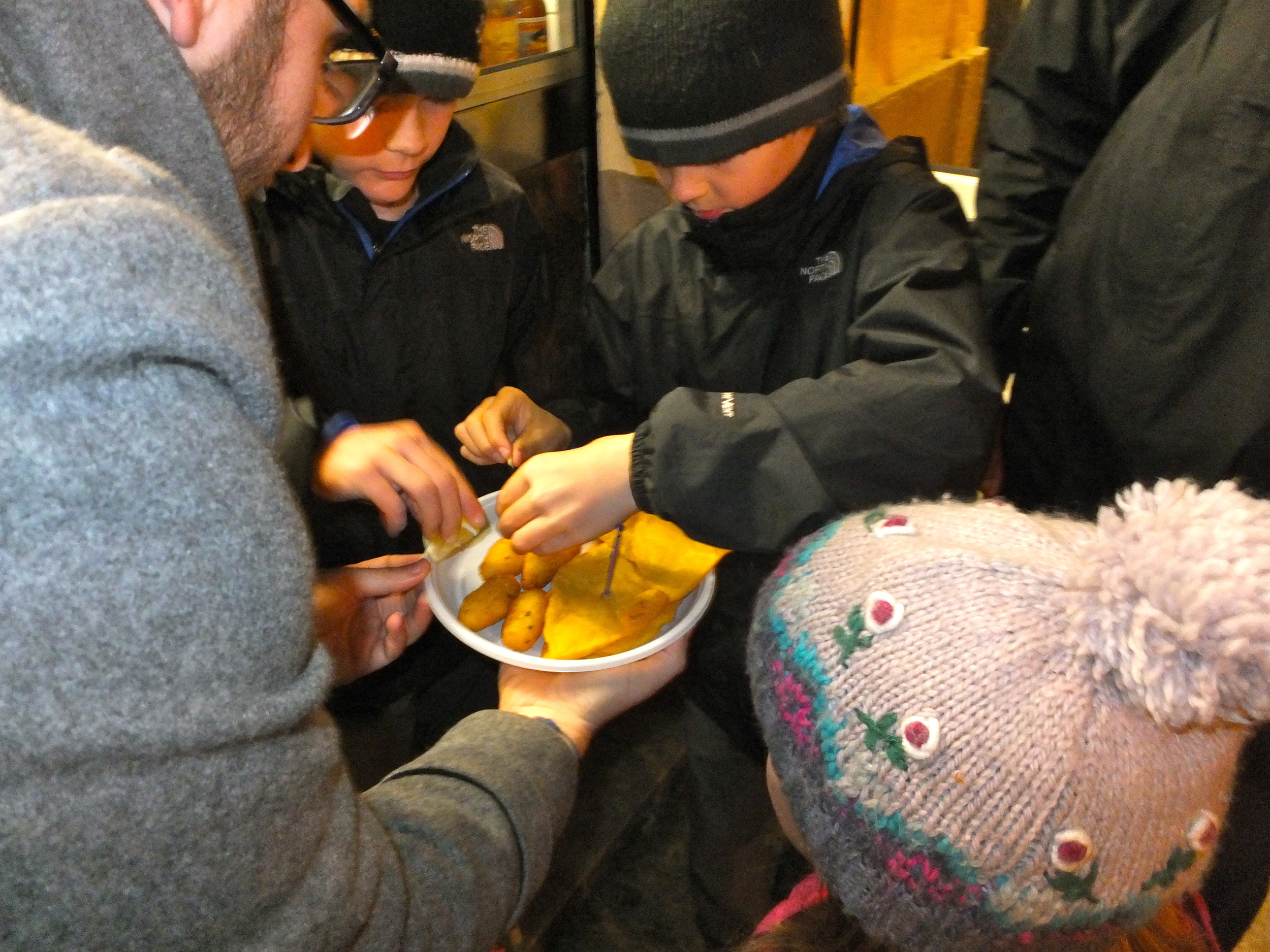In the last two days in Palermo we had a TV crew filming some episodes of a new Italian fictional series. Its name is "Catturandi" and inside the group of background actors, they chose also almost all of our important vendors.
They decided to film in different locations and one of these was our favorite historical market, La Vucciria.
Vucciria is probably the most famous Palermo market. In the local dialect, Vicciria means “voices” or “hubbub” which is certainly one way to find the market – just listen for the noise as everyone haggles back and forth! It flows through the side streets around the Piazza San Domenico.
The Vicciria market is open Monday through Saturday from around dawn until 2 pm (like most of the markets in the city). All kinds of fresh seafood, herbs, and local produce are on offer, but you’ll need to go before 10 am to get the best options. Souvenirs and local handcrafts are also offered at the Vicciria market.
